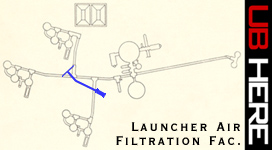|
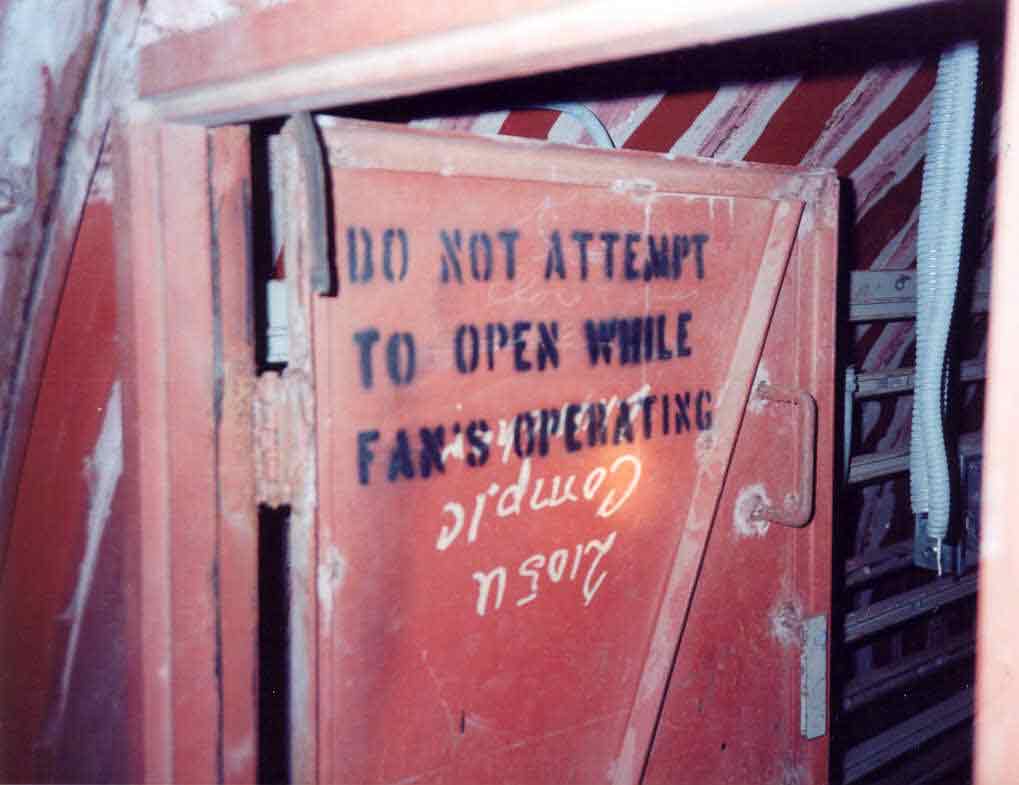
Access
door to the filtration area. Finally, a place where you can stand
up straight if you happen to be more than 4'5" tall!
|
This
structure is cylindrical and 18' in diameter by 40' deep.
Everything here has a foot of rattle space in case of any seismic
unpleasantness caused by enemy strikes near the complex.
|
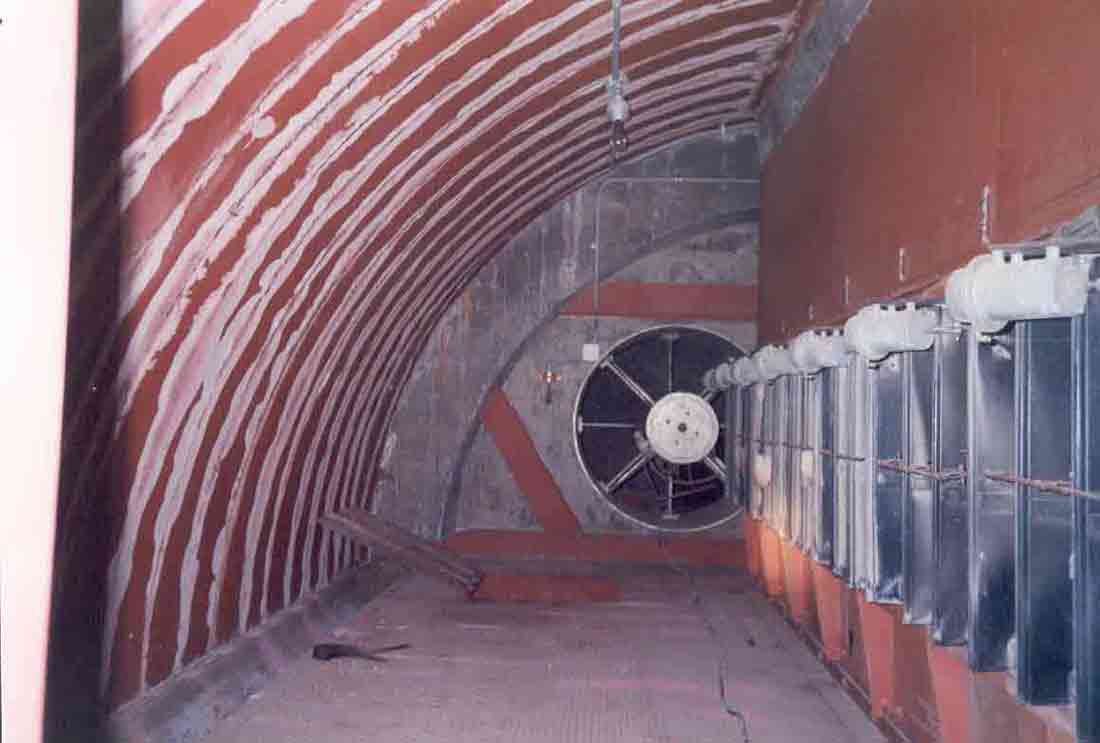
Here
on the left side of the filtration facility, raw surface air was drawn
in through four 48" blast valves (only 1 is visible from here) and
then through the inlets to the cyclonic dust separator on the right. Once
again we see the electrical cable running along the floor and through
the blast valve.
|
In
this area, dust and particulate was removed by cyclonic dust separators
and then the air was drawn through filters and warmed and humidified
before being forced out into the site. Let's have a look to our
left...
|
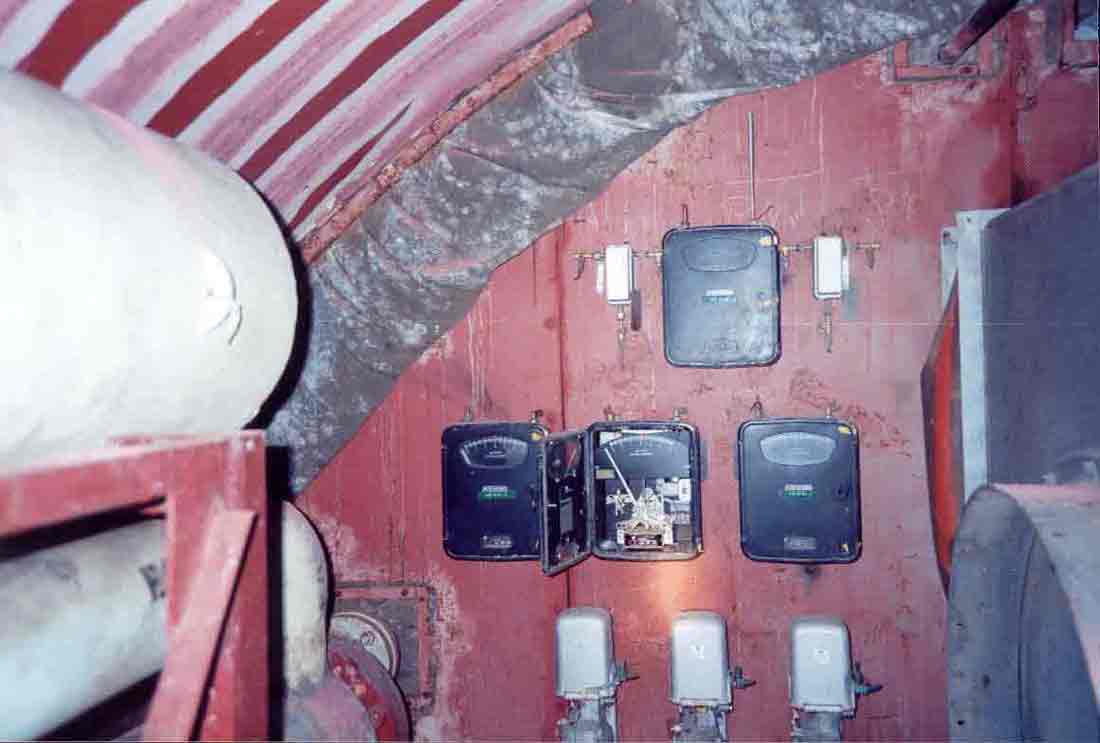
Black
monitor and control boxes next to the centrifugal fan. These boxes
were everywhere throughout the complex and were
manufactured by Foxboro. I'm sure you'll sleep better knowing
that... On
the right is the inlet to the fan. Standing here with the fan on
would be a very bad idea I think. A radiation
detector was located in this area to alert the crew of any contamination
entering the air handling system. Still not sure what they would
do if any was detected...
|
Moving
back to the blast valves...
|
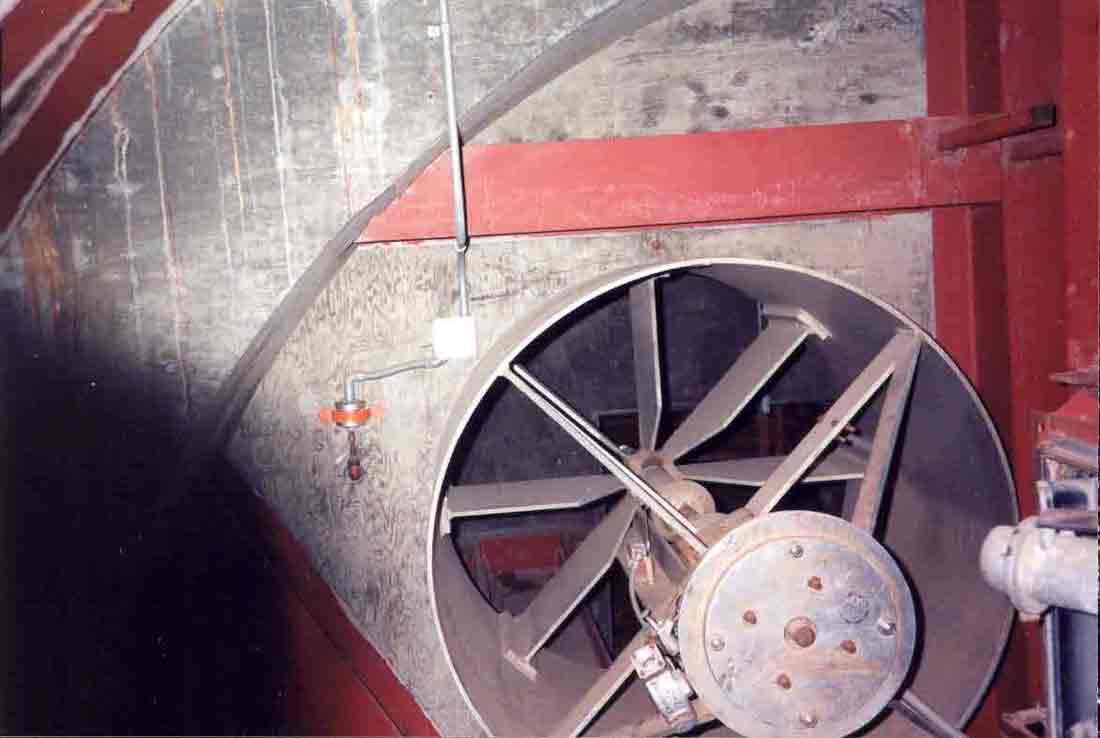
A
closer view of one of the 48" blast valves. The actual
closures (once attached on the other side of the openings) have been
removed for scrap allowing a view to the other side and the intake
shaft.
|
If
we sneak around to the right and avoid falling about 10 feet into the gap
between the dust collector and the blast valves, we can see what's
going on with the air flow through here:
|
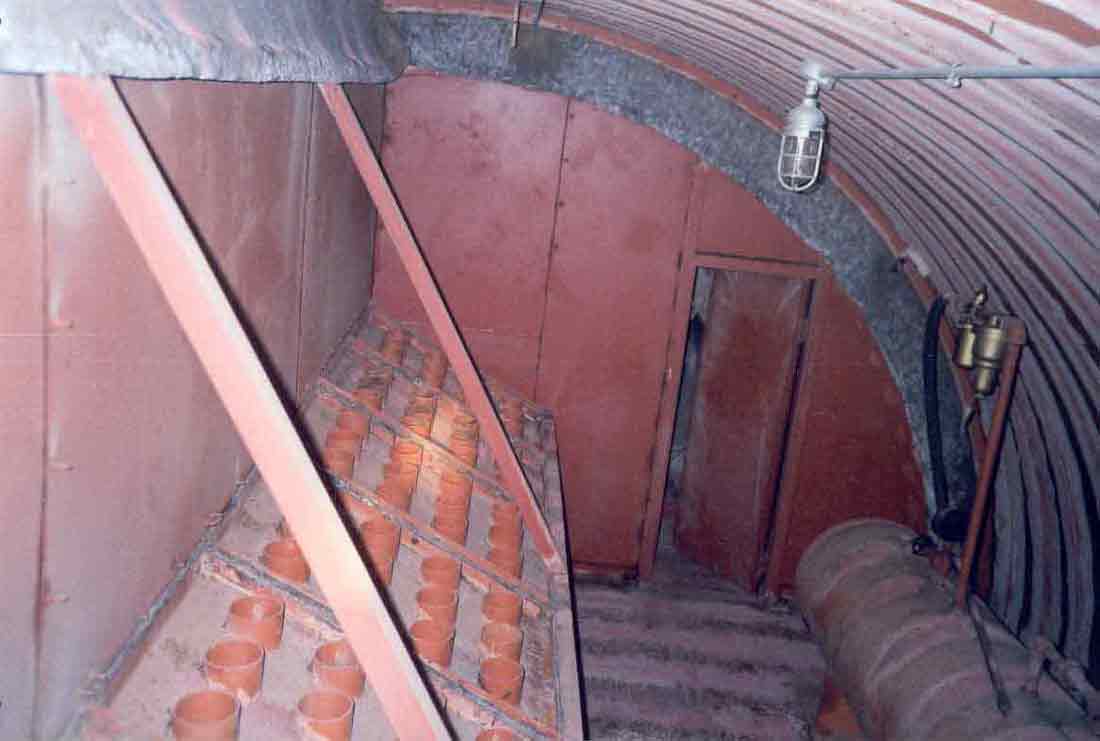
Few
people are aware that the Phantom of the Opera would hide himself in the
tunnels of a Titan complex. Here you can see the pipes for the
organ. Every site had one. Really. No foolin'.
Ok,
this could possibly be the cyclonic dust collector... A short and
narrow door through the bulkhead and we're in this sealed area.
Air from the inlets was forced through these funnel-shaped tubes where
it swirled up and out. Swirling the air in these tubes caused any
dust or particulate to settle out into hoppers below.
On
the right is another pressure accumulator for the blast valves.
|
You
may have noticed an open hatch back by the blast valves. We'll
check out what's below next...
|
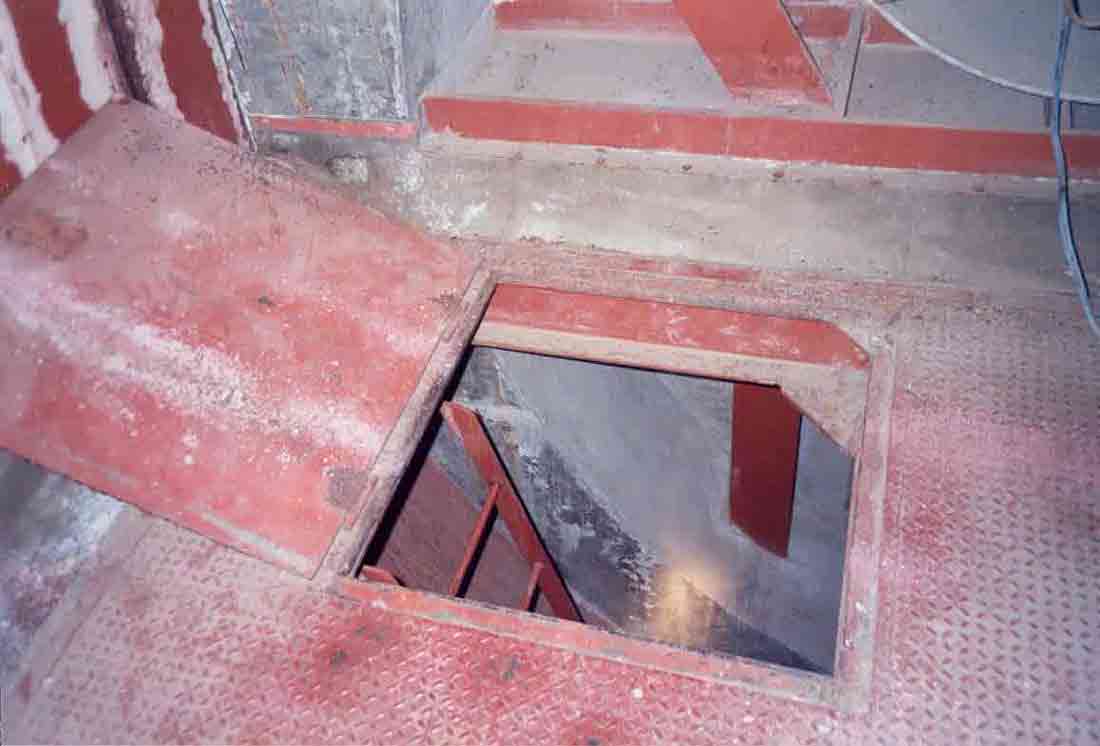
The
rest of the filtration facility is down here.
|
|
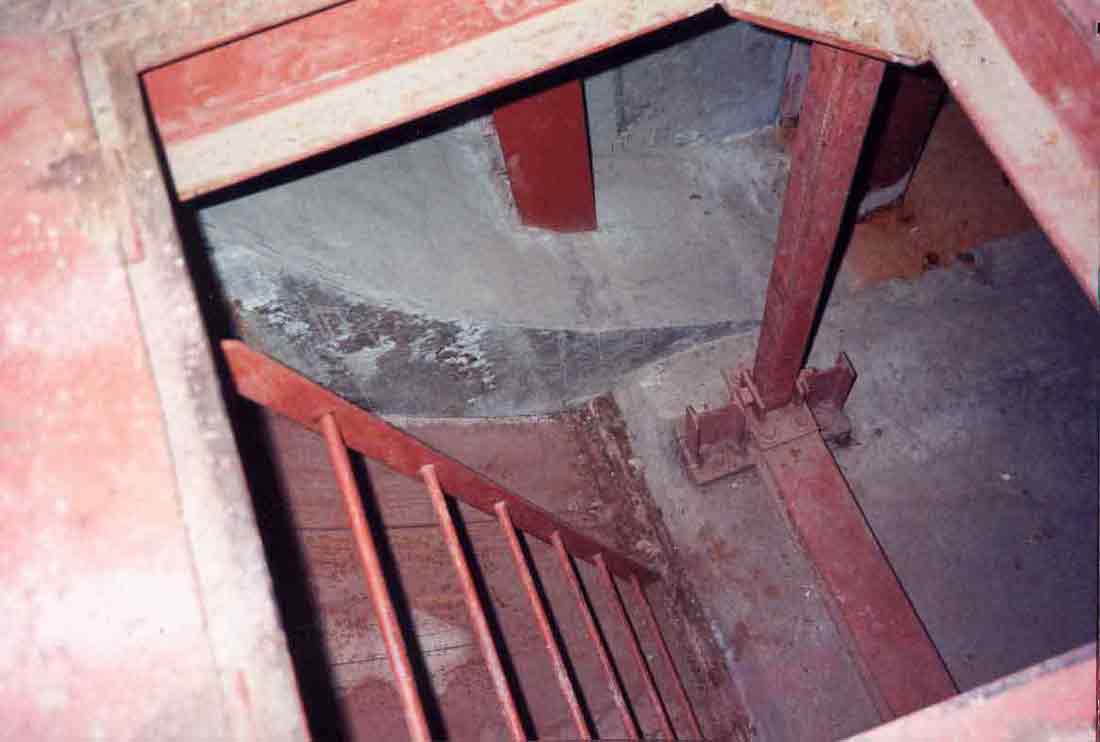
Below
we find the rest of the dust collector apparatus and access as well as
personnel access to the air intake shaft. Get down there
already!
|
Down
below is the rest of the filtration equipment. There's only about
6 feet of clearance in here so you have to watch your head. On the
left are the hoppers where all the dust and particulate from the
cyclonic dust separator collected. The hatch hanging open was
access to remove accumulated dust.
|
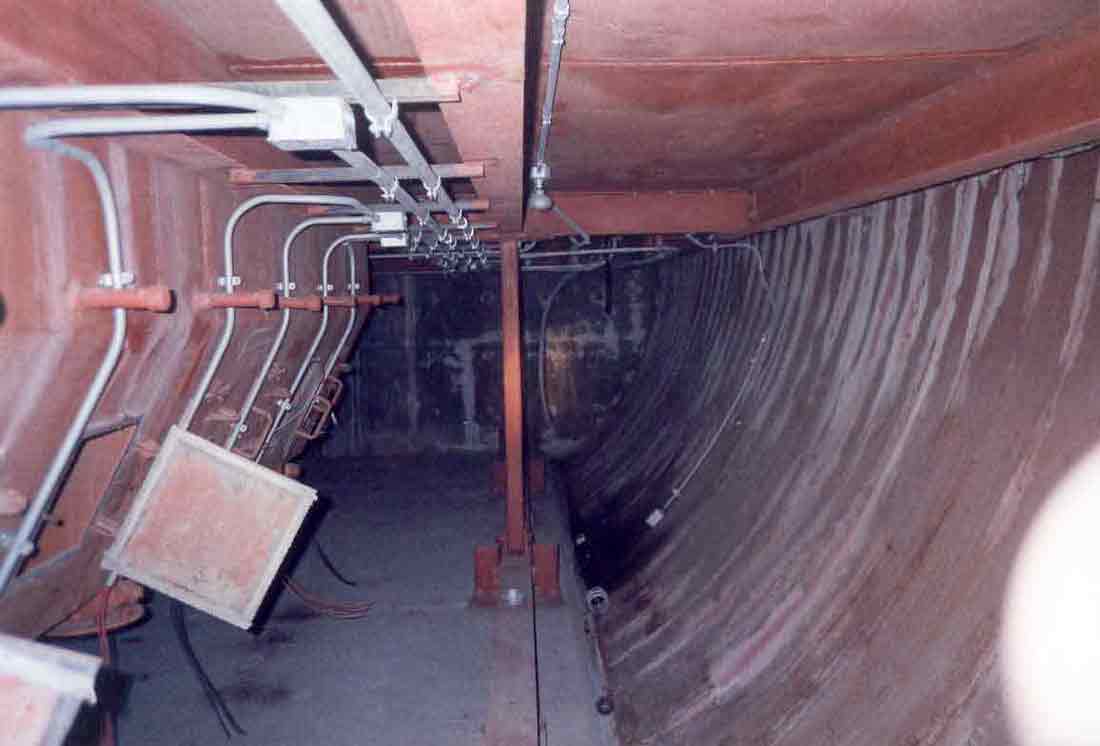
On
the lower level
|
Let's
just have a look inside that hatch shall we? (You have no choice
so just play along)
|
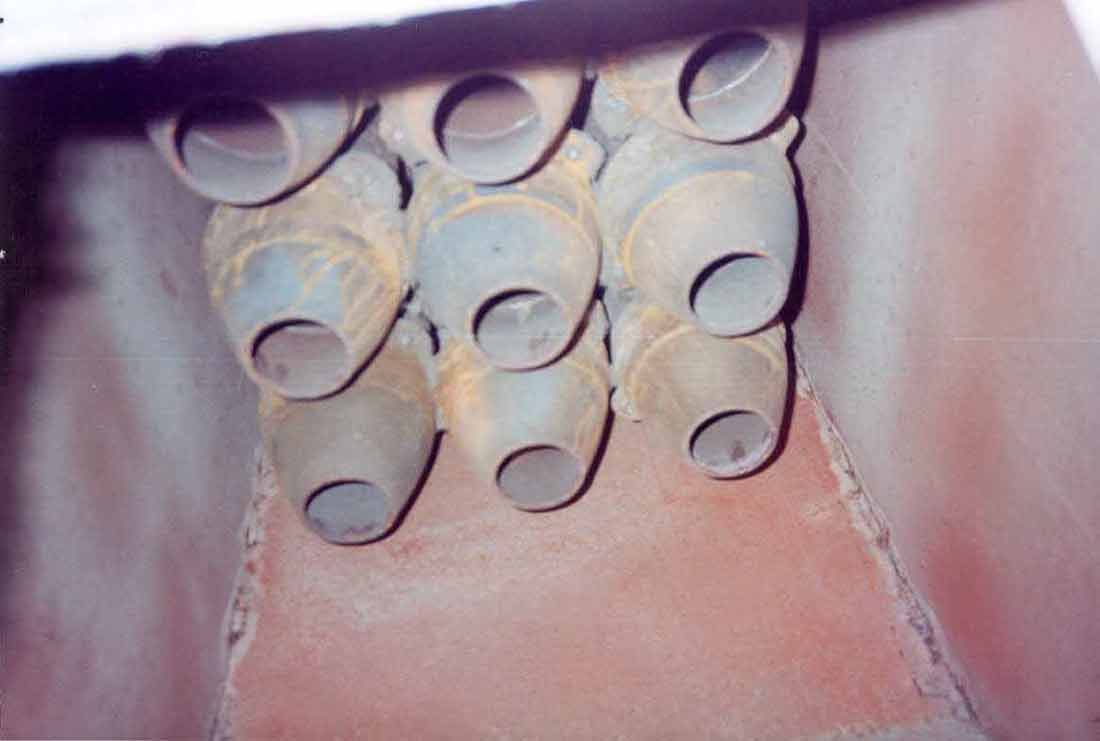
Run
for your life! It's the hive of the CyberBees!!
|
...Or
it might just be the bottom of the cyclonic dust separators. Here
you can see how these marvels of engineering worked: Air was fed
into the separators from the side and swirled upward through these tubes
while dust settled out the bottom here. The air emerged above and
then was further filtered and conditioned before being forced out into
the tunnels.
There's
not much else to see in this area so let's have a look at the air shaft.
|
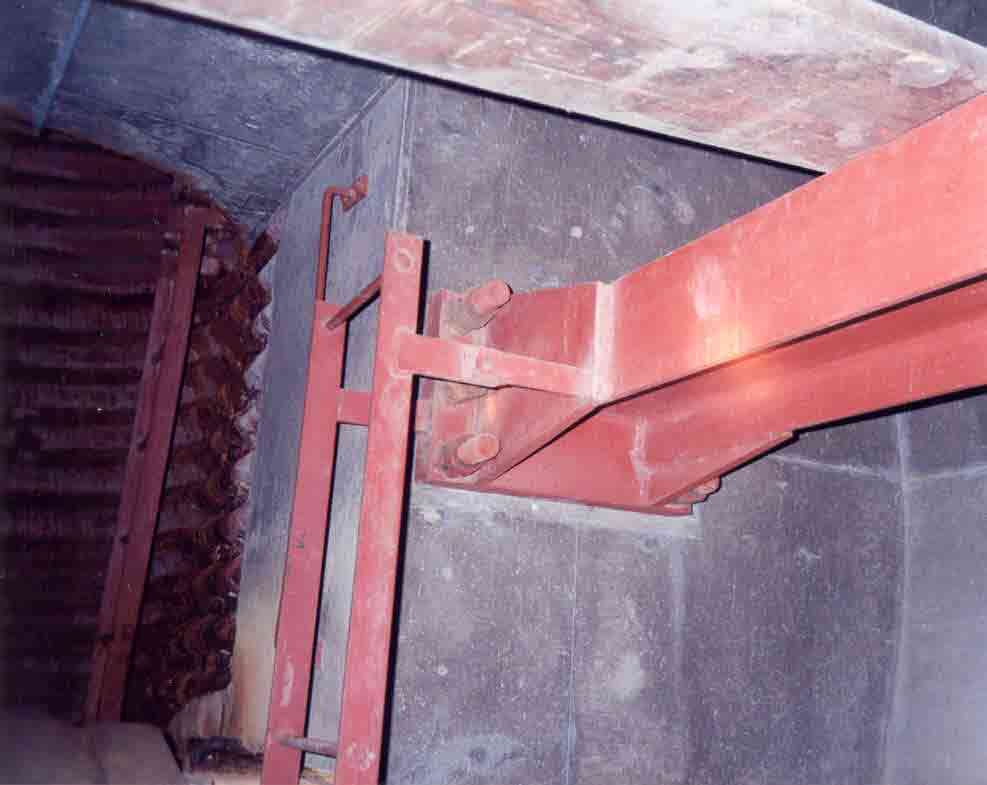
Another
corrugated liner for the air shaft. The shaft is 5' in diameter
and runs about 40' to the surface. Although there is a ladder, it
is not clear whether this was a viable escape route. It's
definitely not the route to take if you're in a big hurry to get
outside.
|
Stepping
through a very robust 4'x4' blast door (not shown, sorry. I only
have 10 megs to work with here) and were on the other side of the blast
valves and a very thick concrete wall. This beam is held by
fist-sized bolts.
Let's
take a look at the air shaft-- oh wait, first let's look at this:
|
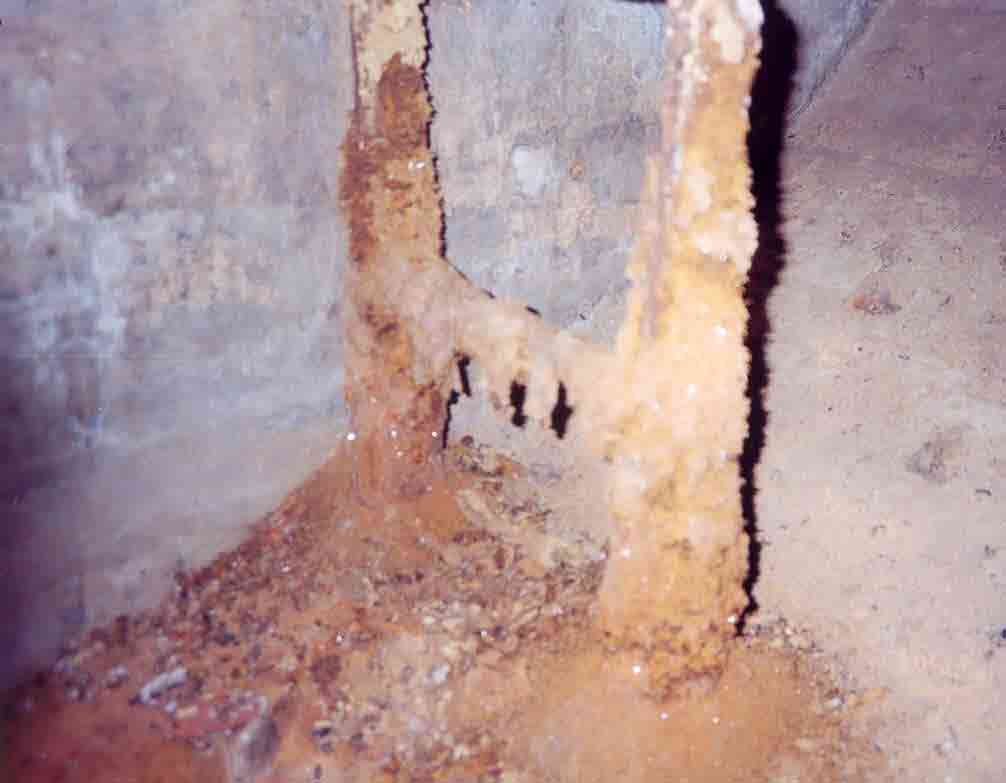
This
is the base of the ladder in the foreground of the previous
picture. Iron oxide and some suspicious crystals are forming on
it. Now rust, that I get, but what the hell are these
crystals? It ain't rock candy folks!
|
|
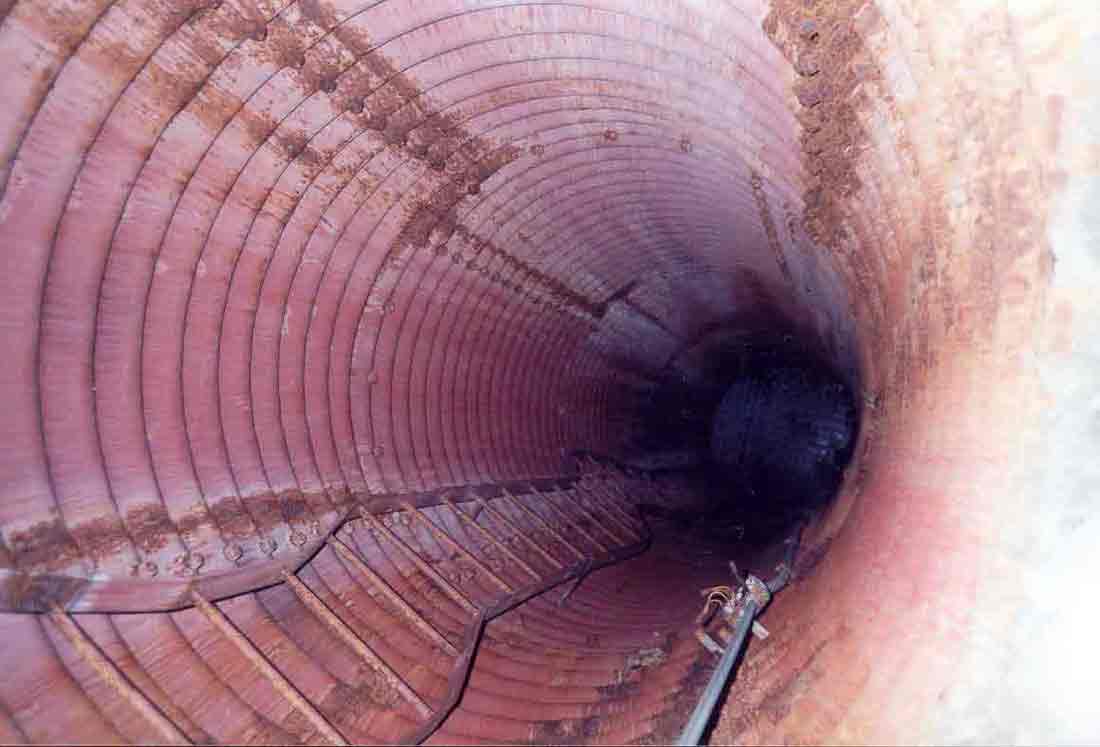
Looking
up the air shaft. Notice the strange angles in the ladder and the
lack of light shining down from above. This is because the ladder
was hacked off with a torch just above the opening and a one-inch thick
steel plate followed by a rather large concrete block were placed on
top. From the looks of it, this placement was anything but gentle.
|
|
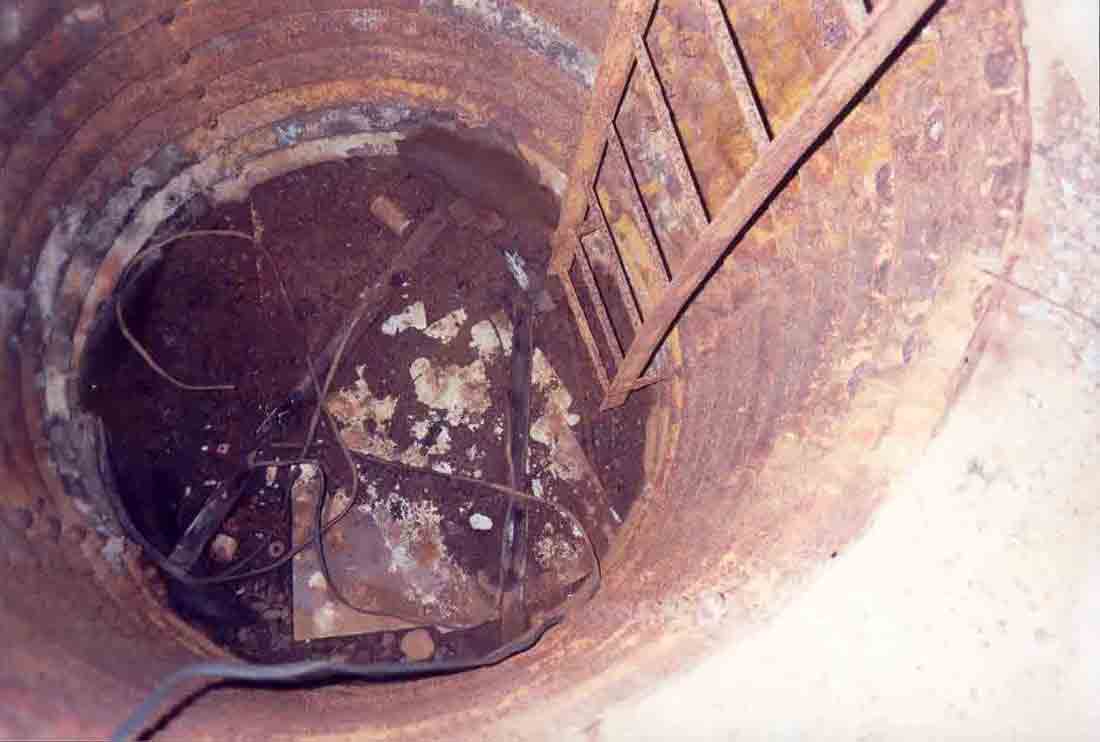
The
bottom of the airshaft: Final resting place of that electrical
cable we've been breathlessly following since tunnel junction #12.
|
Clearly
you can't get out this way. You'll have to go back (or use the
links at the top-- that's what they're there for!) out the way you
came.
Blast
Lock #2 or Go
to Main Map

|
Contact
| Site Map | Links |
Hosted by
InfoBunker

